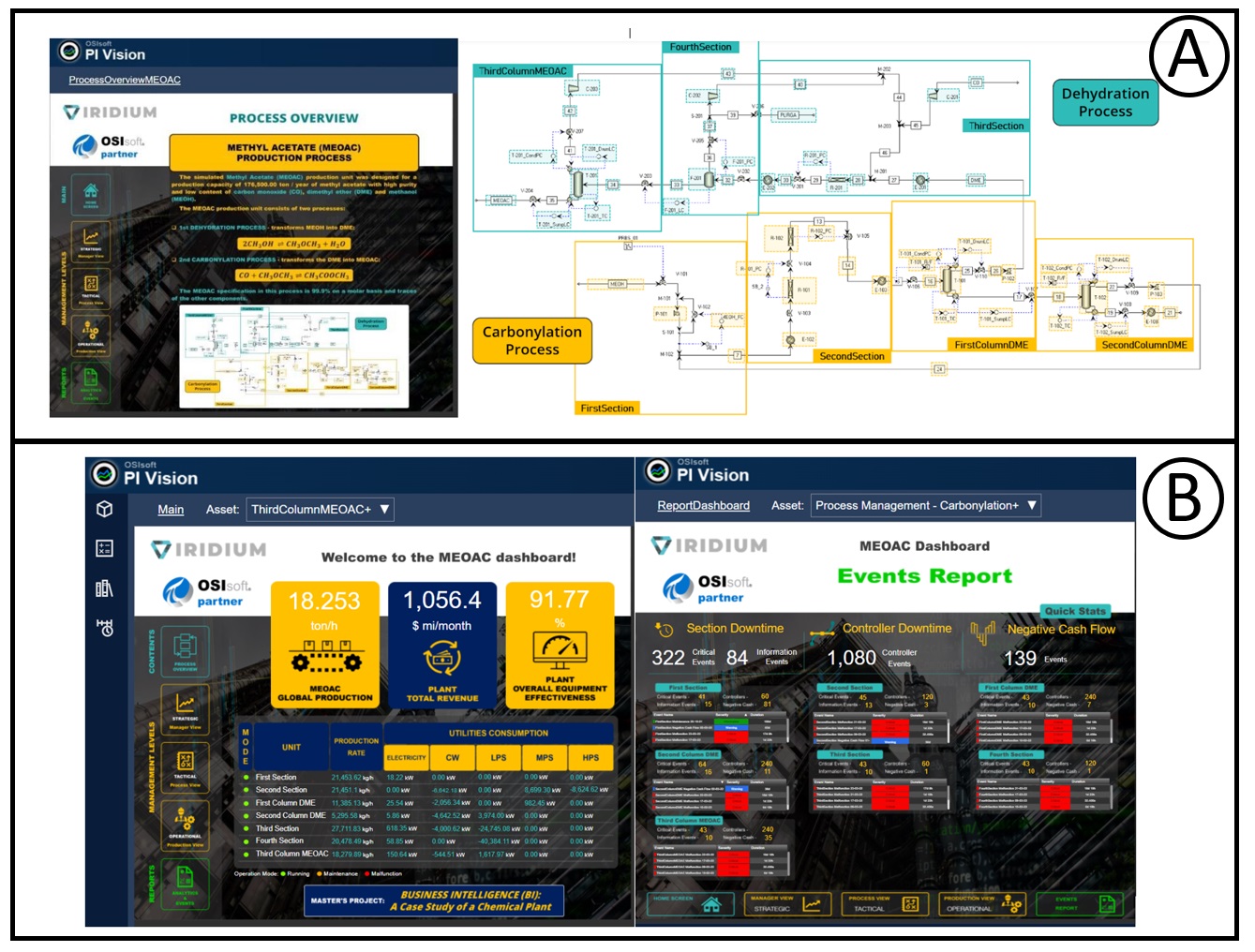2022 Annual Meeting
(39c) Business Intelligence: A Case Study of a Chemical Plant
Authors
In this sense, this work proposes the generation of a Digital Shadow and implementation of a complete BI system from data generated by a rigorous Process Digital Twin5. For this purpose, a chemical process has been implemented in Aspen Plus Dynamics (Aspentech), where data has been continuously generated and connected by an OPC Matrikon Architecture. Such data has been collected by a PI System connector (PI ICU â Interface Configuration Utility) and then sent to a PI System Architecture (AVEVA/OSIsoft). With this software infrastructure, it is possible to capture, store, organize, process, analyze, and share the information obtained/treated through the acquired data6.
As a result, a complete system has been developed in which it's possible to monitor KPI's on the web in real time (Figure 1A) by PI Vision (AVEVA/OSIsoft). In this environment, as depicted in Figure 2B, it is possible:
- Establishing data access according to organizational hierarchies;
- Predicting conditions based on data history;
- Obtaining valuable information based on KPI's to be used by decision-makers, such as:
- Equipment: Status, Active Machines, Availability, Performance, Quality, and OEE;
- Production: Revenue, Percentage of main components, Production rate, and Utilities;
- Events: Section Downtime; Controller Downtime and Cashflow.
- Generating an automatic report system based on event frames and notifications by email.
Finally, it has become clear that industries that use and reuse data most efficiently will have a superior competitive advantage, and this approach can be accomplished through the implementation of the BI system in which it is feasible to identify new possibilities and strategies based on data.
References
[1] SCHWAB, Klaus. The Fourth Industrial Revolution. January 2016, World Economic Forum. ISBN 1944835008.
[2] AIN, Noor Ul; VAIA, Giovanni; DELONE, William H.; WAHEED, Mehwish. Two decades of research on business intelligence system adoption, utilization and success â A systematic literature review. Decision Support Systems. Vol. 125, ISSN 0167-9236. 2019.
[3] ŽIŽEK, S. S.; NEDELKO, Z.; MULEJ, M.; ÄIÄ, Ž. V. Key Performance Indicators and Industry 4.0 â A Socially Responsible Perspective. NaÅ¡e gospodarstvo / Our Economy, 66(3), p. 22â35. 2020. DOI: 10.2478/ngoe-2020-0015.
[4] ZORZUT, Sebastjan. Vodenje proizvodnje v procesni industriji z upoÅ¡tevanjem kljuÄnih kazalnikov uÄinkovitosti : doktorska disertacija. Univerza v Ljubljani, Fakulteta za elektrotehniko. 2009.
[5] KUEHN, Wolfgang. Digital twins for decision making in complex production and logistic enterprises. International Journal of Design & Nature and Ecodynamics, Vol. 13, No. 3, pp. 260-271. 2018.
[6] BASCUR, Osvaldo A.; OâROURKE, Jim. Chapter 6 - Measuring, managing, and transforming data for operational insights. Smart Manufacturing. pg 129-165. Elsevier. 2020.
